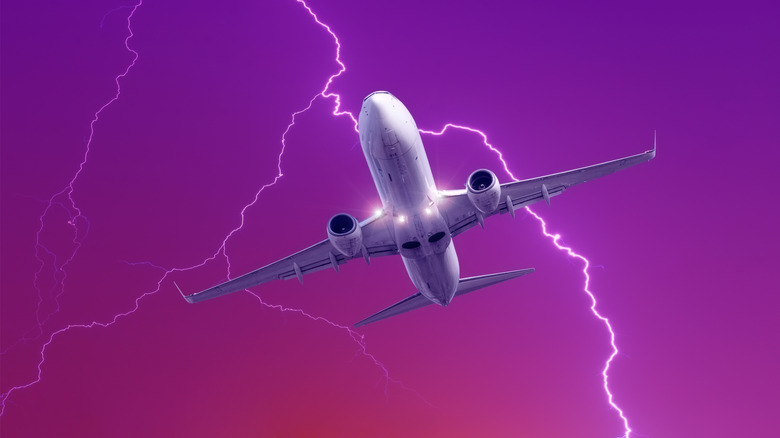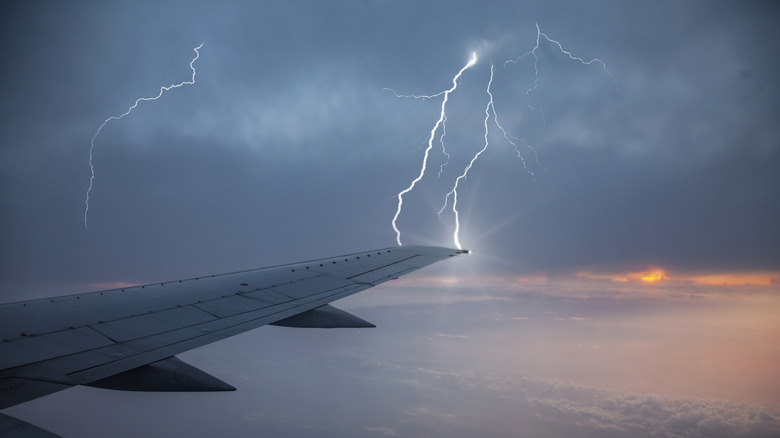What Happens If Lightning Strikes An Airplane? It Depends On The Type
For airplanes, being struck by lightning is a matter of "when," not "if." The National Weather Service estimates that a commercial airplane will be struck by lightning one to two times per year on average. Fortunately, these events almost never cause serious damage because airplanes are engineered to literally weather the storm.
Most aircraft are coated in aluminum, a metal that conducts electricity well, so when lightning strikes, the current travels through the exterior of the plane and off the end of the plane's wing or tail. As long as the aluminum exterior has no gaps in it, the electrical current will not be able to reach any of the people inside the plane. This is similar to the way that your car can protect you from a lightning strike.
Lightning hasn't downed a commercial U.S. airplane since the 1963 crash of Pan American flight 214, which spurred the Federal Aviation Administration to adopt strict requirements for lightning protection on airplanes. Commercial aircraft are also required to undergo a rigorous inspection anytime they are even suspected of being hit by lightning. The regulations are different when it comes to private aircraft, most of which are so small, they can effectively avoid lightning. However, avoiding thunderstorms isn't as straightforward as it may sound. Just because there isn't any thunder or lightning in the vicinity doesn't mean a plane is out of danger.
Planes can actually trigger lightning strikes
Believe it or not, an airplane can actually be struck by lightning even when there isn't a thunderstorm happening. Normally, lightning is generated when opposing electrical charges build up between a storm cloud and the ground (that's why your hair standing on end is one of the main warning signs that lightning is about to strike). The air between the cloud and the ground acts as an insulator until the charges build up so much that they cause a rapid discharge in the form of lightning. However, if an airplane flies through a cloud where energy is building up, it can prematurely trigger the lightning strike.
According to MIT News, approximately 90% of lightning strikes on airplanes are triggered by the plane itself, its conductive aluminum exterior acting as a lightning rod and sparking the electrical discharge. To reduce the frequency of lightning strikes on airplanes, a group of engineers from the university has proposed electrically charging airplanes in order to keep them in balance with their surroundings and prevent them from triggering lightning. They created a system of sensors to monitor the electrical field surrounding aircraft and respond to variations in the atmosphere. Reducing the number of lightning strikes on planes would be much more convenient for airlines, but as passengers, it's nice to know that, as things stand, being struck by lightning while flying isn't anything to worry about.

